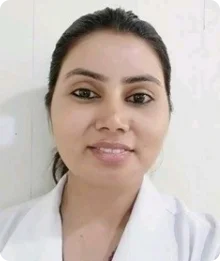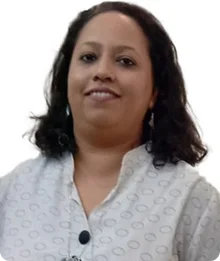“Once you choose hope, anything’s possible.”
Christopher Reeve
Sarcoma, may be defined as “a malignant tumor of connective or other non-epithelial tissue.” It occurs in the connective tissue of the body including fat, blood vessels, nerves, bones, muscles, deep skin tissues, and the cartilage.
Types of Sarcoma
| Liposarcoma | Most common soft tissue sarcoma. Develops in the deep fatty tissue. They are firm, bumpy, and invade the surrounding tissues invasively |
| Fibrosarcoma | Occur in the arms, legs, or the trunk. Occur around scars, muscles, tissues, tendons, and around the lining of the bone |
| Dermatofibrosarcoma Protuberans | Develops as tumor outgrowths forming outside the skin and are commonly observed on the back or the abdomen. If untreated, the tumor may break through the skin leaving an open wound |
| Malignant Fibrous Histiocytoma | Types include storiform pleomorphic, myxoid malignant fibrous histiocytoma, malignant giant cell tumor of soft parts, and inflammatory malignant fibrous histiocytoma. Usually observed in patients above 50 yr of age and occurs more commonly in men than women. |
| Synovial Cell Sarcoma | Occurs most commonly next to a joint in the arms or legs. This type of sarcoma is very painful and is usually treated with radiation, chemotherapy, or amputation combined with chemotherapy. |
| Epithelioid Sarcomas | Occurs in hand and foot of younger adults. Appears like small nodules. Difficult to treat with surgical intervention and treated with amputation. |
| Rhabdomyosarcomas | Accounts for nearly half of sarcomas in children. Types include embryonal, alveolar, botryoid, and pleomorphic rhabdomyosarcoma. |
| Leiomyosarcoma and Uterine Sarcoma | Occurs in the smooth muscles mainly in the gastrointestinal tract and the uterus. Metastases occurs in half of the patients and is usually treated with total abdominal hysterectomy. |
| Gastrointestinal Sarcoma | Results in the formation of stroma in the stomach and intestines. Treated with Gleeve (a biological agent that retards the activity of gtenes required for the growth of tumor). |
| Alveolar Soft-Parts Sarcoma | Very rare type of sarcoma which usually occurs in female adolescents and young adults. Slow growing tumor found in extremities and metastases into the lungs. |
| Kaposi’s Sarcoma | A condition in which cancerous cells are found underneath the skin or mucous membranes (mouth, nose, or anus). Commonly occurs in older Jewish, Italian, or Mediterranean men, patients receiving organ transplant, and patients with AIDS. |
The diagnosis of sarcoma is extremely rare worldwide. Often, patients do not experience any pain or discomfort due to the presence of sarcoma which is the most common reason for its late diagnosis. The diagnosis is confirmed after a series of tests including biopsies, computed topography scan (CT-scan), positron emission tomography scan (PET scan), X-ray, magnetic resonance imaging (MRI), ultrasound, and laparoscopic procedure. In most cases, patients have already gone through immense amount of stress until the diagnosis of sarcoma is confirmed. Developing a thorough treatment plan for sarcoma is only possible with a confirmed diagnosis of the condition. The presently available treatments for soft tissue sarcoma include surgery, radiation therapy, chemotherapy, interventional radiology, and targeted therapy.
The National Cancer Institute recommends different treatment options as per the stage of sarcoma.
- Stage I adult soft tissue sarcoma
- Surgical removal of the tumor along with radiation therapy either before or after the surgery.
- Stage II adult soft tissue sarcoma
- Surgery to remove the tumor; radiation therapy before or after the surgery; radiation therapy or chemotherapy before limb sparing surgery; and high dose radiation therapy for tumors that cannot be removed by surgery
- Stage III adult soft tissue sarcoma that has spread to the lymph nodes (advanced)
- Surgery with lymphadenectomy followed by radiation therapy; a clinical trial of surgery followed by chemotherapy; and a clinical trial of regional hyperthermia therapy
- Stage IV adult soft tissue sarcoma
- Includes chemotherapy and surgery to remove cancer that has spread to the lungs
The duration and intensity of sarcoma therapy can be astonishing and unsettling for patients and their families, and coping with the adverse effects of treatments can be a major and drastic challenge.
The sarcoma center in India “Soft Tissue Tumor Online http://www.histopathology-india.net/SoftTissuePath.htm”
There are many NGOs which aides’ new patients and their loved ones to comprehend a sarcoma diagnosis, look for the best care, manage treatment, adapts well and find support.
| Beat Sarcoma beatsarcoma.org |
| Cure for Sarcoma http://www.cureforsarcoma.com/ |
| Cynthia Solomon Holmes Foundation http://www.cynthiaholmesfoundation.com/ |
| Dani’s Foundation www.danisfoundation.org |
| Desmoid Tumor Research Foundation dtrf.org |
| GIST Support International gistsupport.org |
| H. Lee Moffitt Cancer Center in Tampa moffitt.org |
| Kristen Ann Carr Fund www.sarcoma.com |
| Liddy Shriver Sarcoma Initiative sarcomahelp.org |
| The Life Raft Group liferaftgroup.org |
| LMSarcoma Direct Research http://www.lmsdr.org/ |
| Jared Juggernaut http://jaredsjuggernaut.org/ |
| Northwest Sarcoma Foundation nwsarcoma.org |
| Sarcoma Alliance http://sarcomaalliance.org/ |
| Sarcoma Alliance for Research through Collaboration (SARC) www.sarctrials.org |
| Sarcoma Foundation of America www.curesarcoma.org |






























